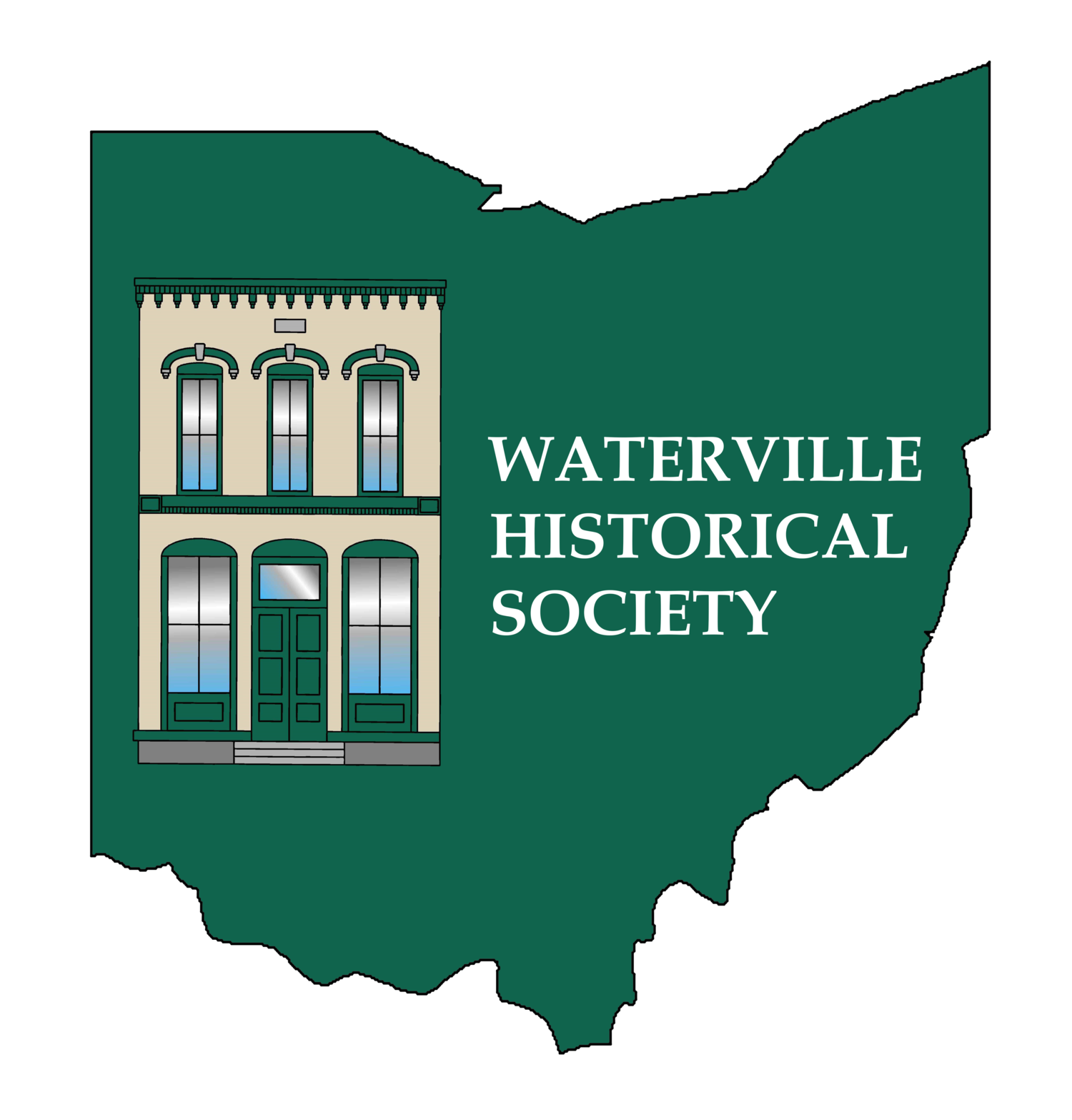SWING BOWL Waterville Fountain Sandwiches Sealtest Ice Cream Meet Your Friends Here - Ma & Pa McDonnnell; SOHIO GAS STATION River Road and Mechanic Street - Raymond Matthewson;
WATERVILLE FOOD MARKET Groceries Meats - Fruits, Dressed Chickens; WATERVILLE HDWE & FARM SUPPLY CO. Phone 2581 Waterville, Ohio; VOGUE BEAUTY SHOP Whitehouse, Ohio Elsie H. Downs Phone 5-5371; Compliments MILO BENNETT; SCHMID Quality Furniture Funeral Home and Ambulance Service Waterville O and Whitehouse O; MATHENY MOTOR SALES 1726 Broadway ToledoWaterville Phone2381 We buy all makes and models of used cars.- Highest legal price paid. Buyer will call at your door; Compliments WATERVILLE MACHINE COMPANY; WHITEHOUSE MOTOR SALES Bauman Bros. General Repairing - Body and Fender Repair - Wrecker Service Providence Street Whitehouse Ohio Phone Main 5-5313; G. F. BUERKPlumbing and Heating - Furnaces and Spouting – Waterville;
WATERVILLE LODGE IOOF 766; FLOYD H. FROST Wholesale Poultry, Phone 2835; BENNY MOOSMAN Sunday Times; C.M.GRAY Contractor; The Swing is to STICKNEY'S For Better Electrical ServiceFrigidaire - Maytag - Easy - Thor - Hoover - Sunbeam AppliancesMixmasters - Spartan - BendixPittsburgh Paint, Pipe and FittingsPhone 2601Waterville, Ohio; AMERICAN METALCRAFT CO. Phone 2521StampingsWaterville, Ohio; C.J.ROACH BarbershopGeneral Insurance; BROADWAY BAR River Road, Waterville, Ohio; THE WATERVILLE HATCHERY Waterville, Ohio Baby Chicks 20th Season Telephone: Hatchery 2821Residence 2023 Howard Squire, Owner; DISHER ELECTRIC STORE Whitehouse, OhioG.E. Appliances, Philco Radios, Farm Freezer Units, Farm Electric Equipment, Service and Repairs; KURTZ SUPER SERVICE Fleetwing Gas and OilsDeSoto and Plymouth Sales & ServicePhone 3111Waterville, Ohio; Compliments of PAGE DAIRY COMPANY Whitehouse, Ohio; WATERVILLE TIN & PLUMBING Spouting - Roofing - Heating - Plumbing - Lightning Rods Service and Installation H. E. WilesPhone 2702Waterville; TOWN THEATER Whitehouse, Ohio; FALLEN TIMBERS REBEKAH LODGE No. 691; C. TOWNSEND For Proprietory MedicinesStock & Poultry RemediesWallpaper - PaintsC.M. Townsend, Whitehouse, Ohio; HOLLIKER'S General MerchandisePhone 55342Whitehouse, Ohio; GRAF BROS' GARAGE phone 2711 Waterville, Ohio; CORDY'S MODERN SHOE REPAIR "The Port of Lost Soles"; RUPP'S GENERAL STORE We specialize in made to order Window Shades; "Let's all pull together for Waterville" TOLEDO RUBBER PRODUCTS CORP.; WATERVILLE BEAUTY SHOPElsie H DownsPhone 2192; TILTON'S HARDWARE Hardware - Paint - Glass HousewaresWhitehouse, Ohio; WEBSTER'S MARATHON SERVICE STATION Waterville, Ohio; Compliments of KENNETH M BROWNE M.D. Whitehouse, Ohio; Compliments of WHITEHOUSE STATE SAVINGS BANK Whitehouse, Ohio; Compliments ofDR. RAYMOND L. WRIGHT; LYTLE'S CABINS Route 64Waterville, Ohio; MALLENDICK MEAT MARKET Fresh Meats - Fish and Oysters in Season Whitehouse, Ohio; L.E. WYNOCKER Realtor Waterville, Ohio Phone2891; H. M. ALLION General Insurance Whitehouse, OhioTel.Off 5-5151Res. 5-5565; THE WATERVILLE STATE SAVINGS BANK CO. Waterville, Ohio; Compliments ofW.C. Suter - M.D.; Compliments of FARMER'S MARKET Home Furnishings and Electric Appliances; WAFELDOG LunchTake 2 They're Small! Ted and Glad Moss; MARTIN & HUFF Food Locker ServiceFresh MeatGroceriesWaterville - 3241Whitehouse 5339; J.L. METCALF OIL COMPANY Distributors of Fuel Oil, Gasoline, Motor Oil and AccessoriesElectrical Appliances Phone 2941; Compliments STARKWEATHER STORE; THE KOCH LUMBER COMPANY; Lumber, Coal, Builders' Supplies, Builders' Hardware, Interior FinishMaumee - Perrysburg – Waterville; Compliments DR. R. H. HAMMANWaterville, Ohio; GUSTAVE A. DEDRICH General InsuranceEstablished 1907Phone 2971 Waterville, Ohio; HERCULES POWDER & BLASTING SUPPLIES A.E. MerifieldWaterville, Ohio; FALLEN TIMBERS REBEKAH LODGENo. 691 Waterville, Ohio; Compliments ROCHE DE BEOUF CAMP No 9213 ROYAL NEIGHBORS OF AMERICA; THE WATERVILLE FARMERS' ELEVATOR COMPANYGrain - Feed - Coal – Fertilizer.
Note:This a card table that maybe seen at the Wakeman Archival Research Center which shows the businesses that were in the Waterville-Whitehousearea in 1946. Do you recog(nize any of them?)








